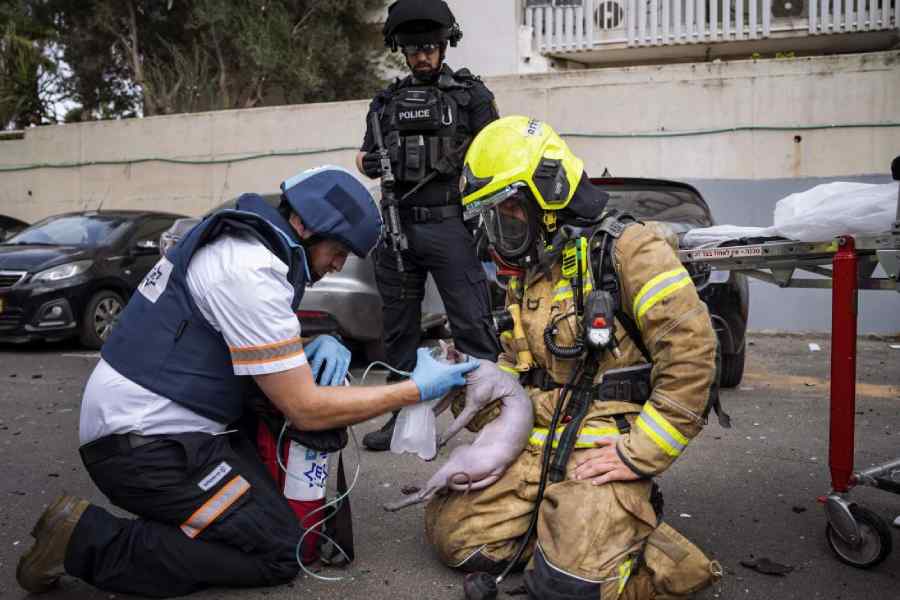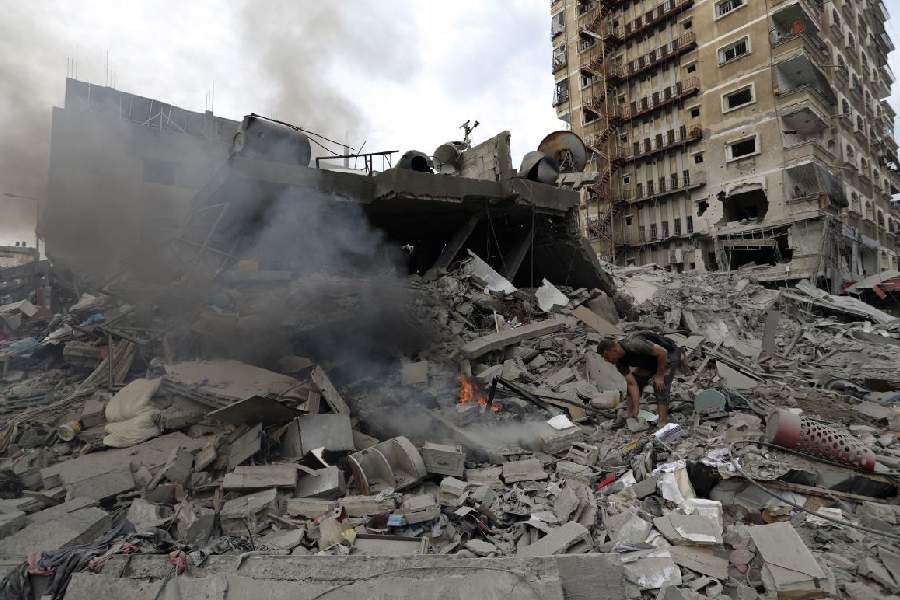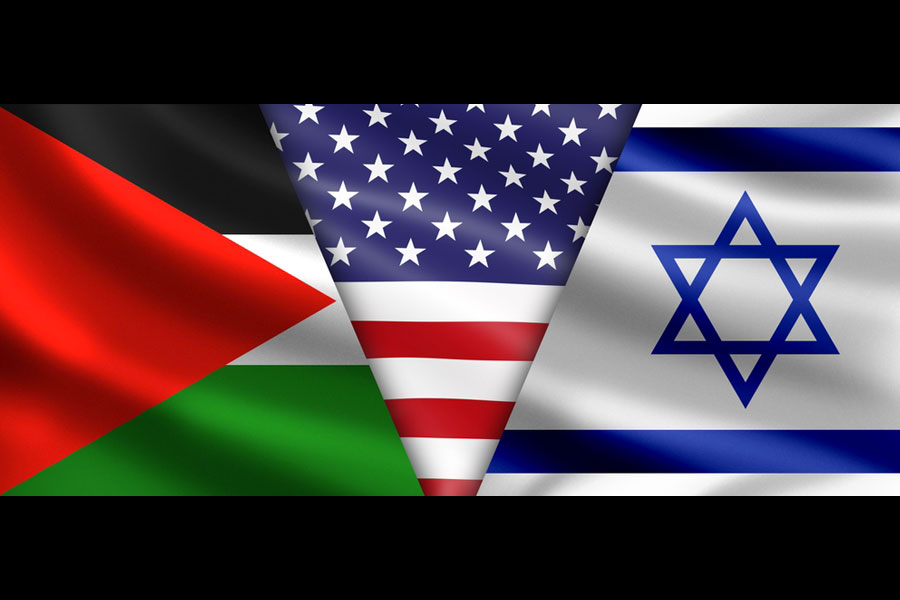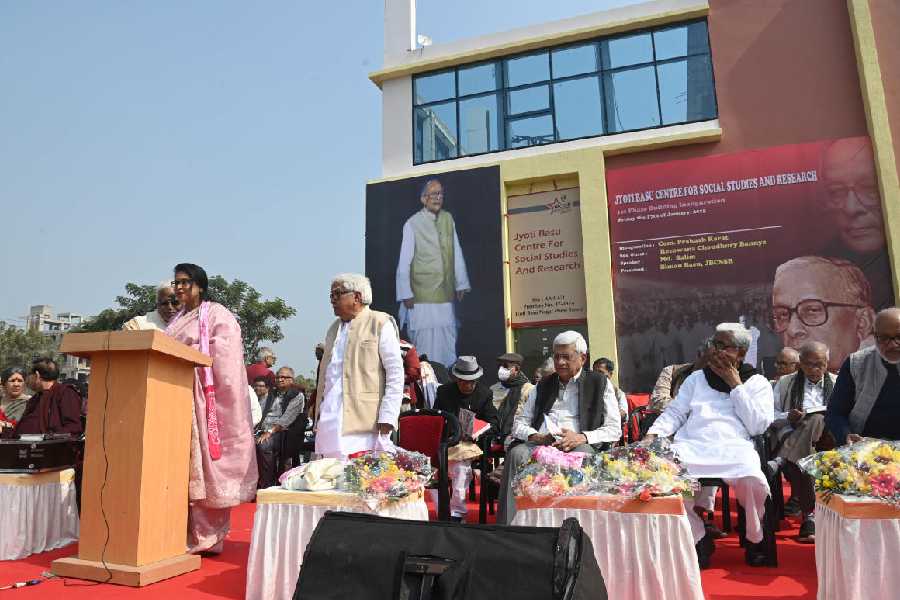Internet and phone services collapsed in the Gaza Strip under intensified bombardment on Friday night, largely cutting off its 2.3 million people from the outside world and each other, as Israel’s military said it was “expanding” its ground operations in the besieged territory.
Themilitary’s announcement signalled it was moving closer to an all-out invasion of Gaza, where it has vowed to crush the ruling Hamas group after its bloody incursion in southern Israel three weeks ago.
Frequent explosions from airstrikes lit up the sky over Gaza City after nightfall on Friday, when the blackout in Internet, cellular and landline services hit. The Red Crescent said it had lost all contact with its operations room and medical teams. It said it feared people would no longer be able to contact ambulance services. Other aid groups said they were unable to reach staff on the ground.
The Palestine Telecommunications Company, Paltel, announced “a complete disruption of all communication and Internet services” because of the bombardment.
An Israeli military spokesperson, Rear Admiral Daniel Hagari, said ground forces were “expanding their activity” in Gaza and that ther were “acting with great force... to achieve the objectives of the war”.
Israel has amassed hundreds of thousands of troops along the border with Gaza ahead of an expected ground offensive against the Hamas militant group.
Earlier in the day, defence minister Yoav Gallant told a small group of foreign reporters that Israel expected a long and difficult ground offensive into Gaza soon. It “will take a long time” to dismantle Hamas’s vast network of tunnels, he said, adding that he expected a lengthy phase of lower-intensity fighting as Israel destroyed “pockets of resistance”.
His comments pointed to a potentially gruelling and open-ended new phase of the war after three weeks of relentless bombardment. Israel has said it aims to crush Hamas’s rule in Gaza and its ability to threaten Israel.
But how Hamas’s defeat will be measured and what an invasion’s endgame would be remain unclear. Israel says it does not intend to rule the tiny territory of 2.3 million Palestinians but has not said who it expects to govern Gaza. Gallant has suggested that a long-term insurgency could ensue.
In a sign of rising tensions in the region, US warplanes struck targets in eastern Syria — which the Pentagon said were linked to Iran’s Revolutionary Guard — after US forces faced a string of attacks and two mysterious objects hit towns in Egypt’s Sinai Peninsula.
The Palestinian death toll in Gaza has soared past 7,300, according to officials there. A blockade on Gaza has meant dwindling supplies of food, fuel, water and medicine. The UN has warned that its aid operation helping hundreds of thousands of people was “crumbling” amid near-depleted fuel.
Gaza’s health ministry on Thursday released a detailed list of names and identification numbers of those killed, including more than 3,000 minors and more than 1,500 women.
More than 1,400 people were slain in Israel during Hamas’s October 7 attack, according to the Israeli government, and at least 229 hostages were taken into Gaza. Palestinian militants have fired thousands of rockets into Israel, including one that hit a residential building in Tel Aviv on Friday, wounding four people.
The overall number of deaths far exceeds the combined toll of all four previous Israel-Hamas wars, estimated at around 4,000. A ground invasion is expected to cause even higher casualties on both sides as Israeli forces and Hamas battle each other in dense residential areas.
Gazan hospitals have been scrounging for fuel to run emergency generators that power incubators and other life-saving equipment after Israel cut off all fuel deliveries at the start of the war, forcing its only power plant to shut down.
Gallant said Israel believes that Hamas would confiscate any fuel that enters. He said Hamas uses generators to pump air into its hundreds of kilometres of tunnels, which originate in civilian areas. He showed reporters aerial footage of what he said was a tunnel shaft built right next to a hospital.
“For air, they need oil. For oil, they need us,” he said.
Late on Friday, the army released photos showing what it claimed were Hamas installations in and around Gaza’s largest hospital, al-Shifa. Israel has made such claims before, but the army declined to say how it had obtained the photos.
Little is known about Hamas’s tunnels and other infrastructure, and the military’s and Gallant’s claims could not be verified. Speaking at al-Shifa Hospital in Gaza City, Hamas media chief Salama Moussa called Israel’s claims “lies” and said they were “a precursor for striking this facility”.
“I ring the alarm bell. There is imminent danger hovering above the medical facility” and those in it, Moussa said. The hospital has been overwhelmed by thousands of patients and wounded, and around 40,000 displaced Gaza residents have crowded in and around its grounds for shelter, the UN says.
About 1.4 million people in Gaza have fled their homes, with nearly half of them crowding into UN shelters. Hundreds of thousands remain in northern Gaza, despite Israel ordering them to evacuate to the south and saying that those who remain might be considered “accomplices” of Hamas.
Over the past week, Israel has allowed more than 80 trucks with aid to enter from Egypt through the Rafah crossing — including 10 trucks of food, medicine and other supplies on Friday morning. The convoys meet only a tiny fraction of Gaza’s needs amid a worsening humanitarian collapse.
The UN agency for Palestinian refugees, which provides basic services to hundreds of thousands of people in Gaza, said it had been forced to ration fuel among lifesaving machines in hospitals, bakeries and desalination plants, and only had enough for a few more days. UN workers say they will ensure no fuel deliveries go to Hamas.
“The siege means that food, water and fuel — basic commodities — are being used to collectively punish more than 2 million people, among them, a majority of children and women,” Philippe Lazzarini, the head of UNRWA, told reporters.
He said UN workers in Gaza had reported that “the last remaining public services are collapsing, our aid operation is crumbling and for the first time ever, they report that people are now hungry”.
Earlier on Friday, the military said ground forces backed by fighter jets and drones had carried out raids inside Gaza, striking dozens of militant targets over the past 24 hours. It said aircraft and artillery had bombed targets in Shijaiyah, a neighbourhood on Gaza City’s outskirts that was the scene of an urban battle in the 2014 Gaza war.
The military said the soldiers exited the territory without casualties. It reported an earlier raid into northern Gaza on Thursday.
The damage to Gaza from nearly three weeks of bombardment showed in satellite photos of several locations taken before the war and again in recent days. Entire rows of residential buildings simply disappear in the photos, reduced to smears of dust and rubble.
The Israeli military says it only targets militants and accuses Hamas of operating among civilians in an attempt to protect its fighters.
Israel captured Gaza in the 1967 Mideast war and occupied the territory until a unilateral withdrawal in 2005. It has maintained a tight blockade over the area since Hamas rose to power in 2006 parliamentary elections and subsequently seized full control the following year from the internationally recognised Palestinian Authority.
The conflict has threatened to ignite a wider war across the region.













